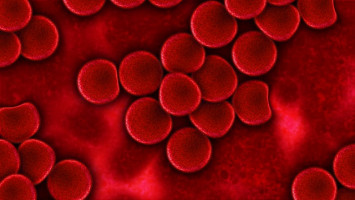
New research published in the online journal BMJ Open suggests that men with prostate cancer have a 50% higher risk of developing serious and potentially fatal blood clots during the five years after their cancer diagnosis compared with men of the same age without prostate cancer.
Although the level of risk is lower than that with other forms of cancer, researchers are encouraging clinicians to be alert to this risk to enable timely diagnosis and treatment, should a blood clot occur.
This is important because venous thromboembolism (VTE) – the type of blood clot in this study – is a leading cause of death among people with cancer, with the risk higher in those with more advanced disease.
Prostate cancer is the most commonly diagnosed cancer in middle-aged and older men, meaning that many men with this type of cancer could potentially experience a VTE.
People with cancer have a higher risk of developing venous thromboembolism (VTE) – dangerous but treatable blood clots in the veins – than people without the disease and the risk varies depending on the type of cancer and what stage it has reached.
VTEs are a leading cause of death in patients.
Prostate cancer is the most commonly diagnosed cancer in middle-aged and older men, meaning that men with prostate cancer are at risk of experiencing a VTE.
Some older studies have suggested that the risk of VTE is two to three times higher in men with prostate cancer than among men of similar age without cancer.
However, the researchers wanted to obtain more recent data in light of the dramatic improvement over the last decade in how men with prostate cancer are managed.
This includes the widespread uptake of newer anticoagulant drugs for other conditions, but which potentially could decrease the risk of VTE.
A team of European researchers, therefore, carried out a large-scale study using nationwide data from men across Sweden, collected during 2007–2017, to compare the occurrence of VTE among 92,105 men with prostate cancer and 466,241 men of the same age without prostate cancer (the comparison group).
They found that 3.2% of men in the prostate cancer group experienced a VTE within about five years of their cancer diagnosis, compared with 2.1% of men in the comparison group.
They calculated that for every 1,000 men with prostate cancer, around seven would develop a VTE each year, compared with around four among every 1,000 men without prostate cancer.
After taking into account factors that could affect VTE risk in their analysis (such as the presence of cardiovascular disease and socioeconomic factors), the researchers showed that the men with prostate cancer had a 50% higher risk than those in the comparison group over the five year study period, with the most risky period being the first six months following cancer diagnosis.
Because this was an observational study, it is uncertain how much of the increased risk was due to the prostate cancer itself or due to other differences between the two groups of men that could have affected VTE risk and which could not be controlled for.
For example, a limitation of the study was the absence of information on smoking status and alcohol intake.
However, this was a large study and the data sources used (various nationwide registers) are known to be of good quality.
The use of data from men across the whole of Sweden means the findings are likely to be an accurate reflection of VTE risk among those with and without prostate cancer.
The authors concluded: “The magnitude of increased VTE risk among men with prostate cancer seen in our study is lower than that seen for other cancer types as seen in previous studies, and is likely attributable to the high proportion of men with localised disease and at low risk of cancer progression.
“Notwithstanding this, physicians treating men with prostate cancer should be aware of the marked increase in VTE risk in these men, particularly in the first six months following cancer diagnosis, to help ensure timely VTE diagnosis.”
Source: BMJ